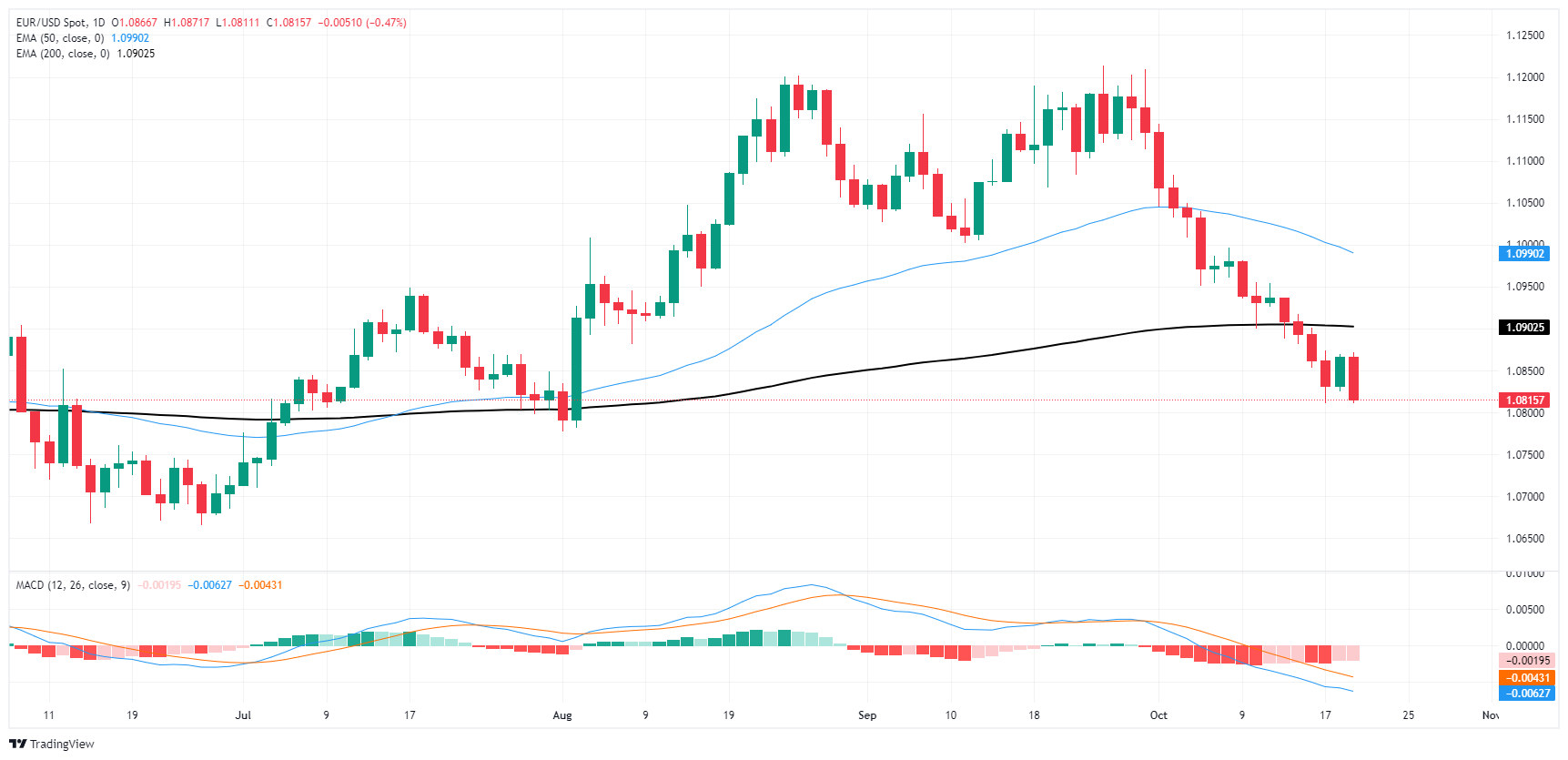The EUR/USD pair continued its gradual decline on Monday, drawing closer to the key 1.08 level, as traders digested ongoing economic uncertainty across Europe and the US. The euro struggled against a stronger US dollar, driven by robust US Treasury yields and expectations of prolonged high interest rates from the Federal Reserve.

Monday’s fallback marks a continuation of the broader trend seen in recent weeks, where the euro has faced increasing pressure due to weaker-than-expected economic data from the Eurozone. Concerns about slowing growth, especially in Germany, combined with persistent inflationary pressures, have kept the euro on the defensive.
On the other hand, the US dollar has benefited from strong US retail sales and employment figures, supporting the view that the US economy remains resilient despite higher interest rates. The 10-year US Treasury yield, reaching multi-year highs, has further boosted the greenback, making it more attractive to investors and pulling the EUR/USD exchange rate lower.
Traders are now closely monitoring both the European Central Bank’s (ECB) and the Federal Reserve’s next moves. While the ECB is facing pressure to pause further rate hikes to avoid deepening the economic slowdown, the Fed’s stance remains hawkish, with further tightening still on the table if inflation persists.
As the EUR/USD pair inches toward 1.08, market participants are bracing for potential volatility ahead of key central bank meetings and fresh economic data releases. Without significant shifts in the Eurozone’s growth trajectory or a change in the Fed’s rate outlook, the euro may remain under pressure in the short term.















